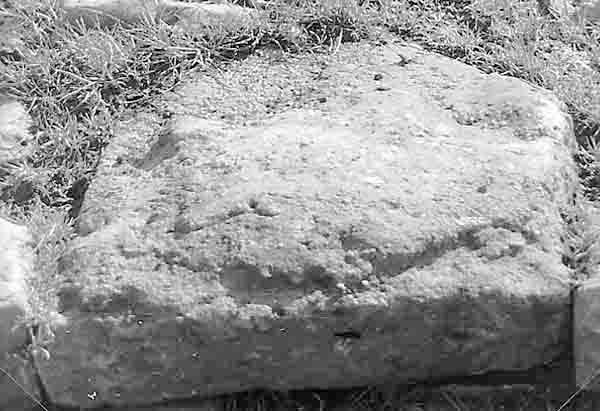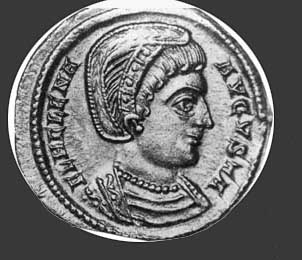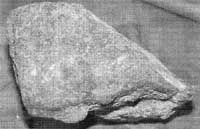|
Is this a Mithraic altar stone ? It has a rough, carved surface, therefore it is not a flagstone. It has a hole at the bottom - is it a Lewis hole for lifting ? Or to be secured in an upright position ?
Introduction
When in the 1960s the local history group studied the history of the
village, very little mention was made of its Roman origin. The Saxon
Charter was just a blinding document that put everything else in the shade.
Yes, Wrington a Saxon village, unbroken records since the Saxon Charter.
Nobody bothered to ask whether there was anything else before. However, we
should have had an inkling that there was some Roman presence from the
writings of the Rev. Prebendary Scarth, who had been the Rector of Wrington
in the 19C, and who discovered Lye Hole Roman villa with its hypocaust.
There were others as well who discovered ancient remains in the vicinity
yet never connected that it could have had a bearing on the village. Coins
were discovered in the church yard, still the penny failed to drop.
A tablet with Roman text on it was found and scores of antiquarians
descended on Wrington in the hope to find some more, alas there were no more
and even the one they had found vanished.
It was in the sixties when a new set of aerial photographs have been
published that I became aware that one showed crop marks in one of the
fields. At that time I did not take much notice of it, until I took part
on an excavation on Mendip, uncovering a Roman fort that I became aware
that the orchard called Ladywell, near Court House Farm, had exactly the
same playing card shape as a Roman fort. The fact that the neighbouring
area is called Alburys reinforced my belief that we are dealing with a Roman
fortification here. Alburys the Saxon word meaning Old Fort or castle.
By then the field had been sold and developed so examination could not be
carried out. However the field south of Long Lane near Branches Cross did
yield some Roman artefacts in the shape of broken tombstones, stones with
rut marks, stone roofing tiles. Further evidence emerged with the help of
Tony Jefferies' 'despised' metal detector, (used to be looked down on by
most serious archaeologists but now they realise its value if it is used
responsibly), which detected small coins from Antoninus Pius to Helena
Augusta, Constantine the Great, Magnentius and Valentinian. He also found a
first century brooch near the Wangwell Brook.
According to Mr Nick Joy. who qualified as an archaeologist at the University of
Bristol, river banks are the places to look for brooches, as women used to do
their weekly washing there.
Scores of other things have appeared since, but let the facts speak for themselves.
Areas which yielded Roman remains
Areas have yielded Roman remains in the shape of broken stones which
were originally tombstones, (one especially important as it bears the mark
of a master builder who was also a Roman Legionary), building blocks, paving
stones, a kitchen tile (with a cat's paw mark imprinted in it), roofing tiles
indicating settlement apparently south of Long Lane. How far this extend
is difficult to say because the fields are under cultivation and for field
walking, one would need the farmer's permission after the crop was
harvested. But since a Roman villa was found at Lye Hole and a further
agricultural building at Row of Ashes farm, we can assume that habitation
extended from the village to the A38 along the Wangwell brook. The centre
of the vicus were the fields immediately. south of Long Lane bordering
South Meadows.
Footpaths and right of ways are of very ancient origins, as men had to walk
everywhere, unless they were rich enough to own a horse, and there is a footpath
along the Wangwell.
It must be emphasised that Wrington has been inhabited continuously for the past 2000 years and each generation made use of the material that was readily
available. Recyclingwas practised until somebody invented the 'disposables'. Therefore we cannot expect spectacular finds as in Pompeii.
|
|
|




